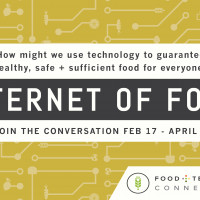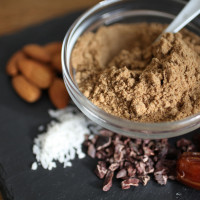Guest post by Greg Sewitz, co-CEO of Exo.
At Exo, we often say that our greatest challenge in convincing people to eat insects comes down to nothing more than branding. After all, the bugs we use in our protein bars, crickets, are objectively good for you and good for the planet. The problem, though, is that most Americans think they’re totally disgusting. This is why we’re looking to what we call “the California Roll Effect” as we position cricket protein in the market.
The California Roll can be thought of as a culinary Trojan Horse. It is made with rice on the outside of the seaweed, and it contains avocado instead of the traditional fatty tuna—both of which are distinctly non-Japanese additions. The California Roll is the Spaghetti Bolognese of sushi. Or perhaps think of it as what Chicken Tikka Masala (created in Scotland, many claim) is to Indian cuisine. They are famous signature dishes—gateway drugs to a cuisine—despite the fact that none of them are popular in their supposed motherlands.
The California Roll was first christened when a chef named Ichiro Mashita at Tokyo Kaiken Restaurant in Los Angeles’ Little Tokyo district couldn’t land any fresh tuna; instead, he used the closest approximation he could find: California avocado. His sushi bar was part of the first wave of restaurants to serve Edomae sushi (raw fish on rice), catering to Japanese businessmen who longed for the elegant simplicity of the food they were raised on.
The sushi craze really caught fire when celebrities, including President Ronald Reagan, publicly stated their love of the cuisine. Between 1988 and 1998, the number of sushi restaurants in the United States quadrupled, and between 2010 and 2014 the number grew by 28%. Today there are at least 10,000 sushi restaurants in America.
At Exo we’ve closely studied the rise of sushi. Why? Because our challenge with insect protein is essentially the same. Here’s how:
Raw fish
- Before the mid-1960s, people thought of raw fish as disgusting. This was because few people in America had ever tasted sushi before.
- Chef Mashita created the crossover vehicle in the California Roll by hiding the most foreign ingredient in ingredients that felt more familiar (avocado and white rice).
- Sushi was able to spread top-down through its adoption by influencers in the Hollywood community. (Admittedly, this was most likely due to circumstantial factors, and not an orchestrated campaign.)
- Eventually, even sashimi—just the raw fish without any rice—became entirely normalized.
Insects (Cricket Protein)
- People think of eating insects as disgusting. This is because no one in America has really eaten insects before.
- We’ve created the protein bars to act as our California Roll. They help people get used to the idea of eating insects in a form and with flavors that feel familiar (chocolate, peanut butter and jelly, etc.). These flavors are developed by our chef, Kyle Connaughton, former Head of R&D at The Fat Duck Restaurant (three Michelin stars).
- Enthusiasm from influencers in the fitness and food spaces (CrossFit athletes, top chefs, etc.) goes a long way in normalizing the concept enough for people to try the product. These include people like Tim Ferriss, Tom Colicchio, etc.
- Once people try the bars they realize that they taste delicious. This allows them to update their idea of what crickets, and insects more generally, can taste like.
Sushi took many decades to reach its current ubiquity, but we think we can do the same within five years, thanks to a few factors.
Some of these factors include mainstream interest in diet and nutrition (Paleo, gluten-free), the “real/natural food” movement (Whole Foods’ domination, anti-GMO fury), foodie fervor (Top Chef, seven hour Cronut lines), and awareness of environmental impact.
Insect protein also has a whole lot more going for it than raw fish did—crickets contain more calcium than milk and more iron than beef gram for gram. Plus, the resource savings are enormous: crickets produce 80 times less methane than cows, and require 20 times less resources to raise overall.
Raw fish rose to prominence on a wave of avocado and rice. Now imagine where crickets can go with a little chocolate.
A longer version of this post originally appeared on Exo’s blog on January 15.
A native of Los Angeles, Greg studied Cognitive Neuroscience and English at Brown University, writing his thesis on the neuroscience of morality. He always assumed he would be a writer, or a scientist—or a science writer. He has worked at the Exploratorium museum in San Francisco assisting in the design of exhibits on climate change and resource depletion and was going to India to teach neuroscience to Tibetan monks before Exo steamrolled in. What’s certain is that he never thought he’d be living a life based around cricket farms and protein bars, but so it goes.







